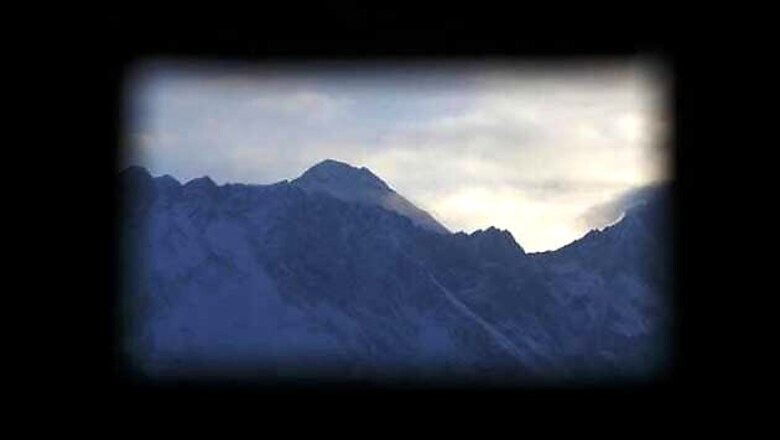
views
Kathmandu: Bad weather frustrated efforts to rescue hundreds of climbers stranded on Mount Everest on Sunday, a day after an earthquake in Nepal triggered an avalanche in possibly the single deadliest incident on the world's highest peak.
An Indian army climbing team found 18 bodies on Saturday in the first hours after the quake, an army spokesman said.
Two helicopters were unable to reach Everest base camp on Sunday because of heavy cloud, according to Ang Tshering Sherpa, president of the Nepal Mountaineering Association. "As soon as the weather improves and the visibility is clear, rescue helicopters will fly there," he said.
The avalanche swept down the mountain, burying part of the base camp as climbers gathered near the main route to the summit at the beginning of the climbing season.
US climber John Reiter said dozens of people had suffered critical injuries at Everest base camp, many of them with head injuries. "It's been a rough 18 hours," he said.
Nepal's Tourism Ministry could only confirm 10 deaths, but spokesman Gyanendra Shrestha said the toll could rise further. One of those killed was Dan Fredinburg, a Google engineer based in California. He suffered head injuries when the avalanche hit, according to a statement from the mountaineering company that had taken him to base camp.
"We pray too for all those who have lost their lives in one of the greatest tragedies ever to hit this Himalayan nation," Jagged Globe said.
Tourism ministry officials estimated that at least 1,000 climbers, including about 400 foreigners, had been at base camp or on the ascent to the peak when the earthquake struck. April is one of the most popular times to scale the 8,850-metre (29,035 foot) peak before rain and clouds cloak it at the end of May. Almost exactly a year ago, an avalanche killed 16 Nepali guides in what was the single deadliest day on the mountain.
Saturday's 7.9-magnitude quake was the strongest to hit Nepal for 81 years. It also shook neighbouring India, China and Bangladesh. Early on Sunday, the official death toll stood at more than 1,800 people in Nepal. Nick Farr, an Australian climber of The Everest Academy and Trek Climb Ski Nepal, said efforts to find out the situation at base camp were being hindered by poor phone coverage. "Nothing is being received out of there at the moment," he said.
Steve Moffat, a mountain guide and operations coordinator for New Zealand-based Adventure Consultants, said two Nepali staff had been killed when the avalanche tore through base camp.
A further 31 staff and climbing clients - including two from the United States, five from New Zealand and one each from Australia, Italy and Iceland - were safe but stranded at Camp 1, further up the mountain.
"The first stage and the first priority is to get them down to base camp. We don't know if it's going to be possible to get them down and out through the Khumbu Icefall or whether we will need to chopper them out," Moffat said from New Zealand.




















Comments
0 comment